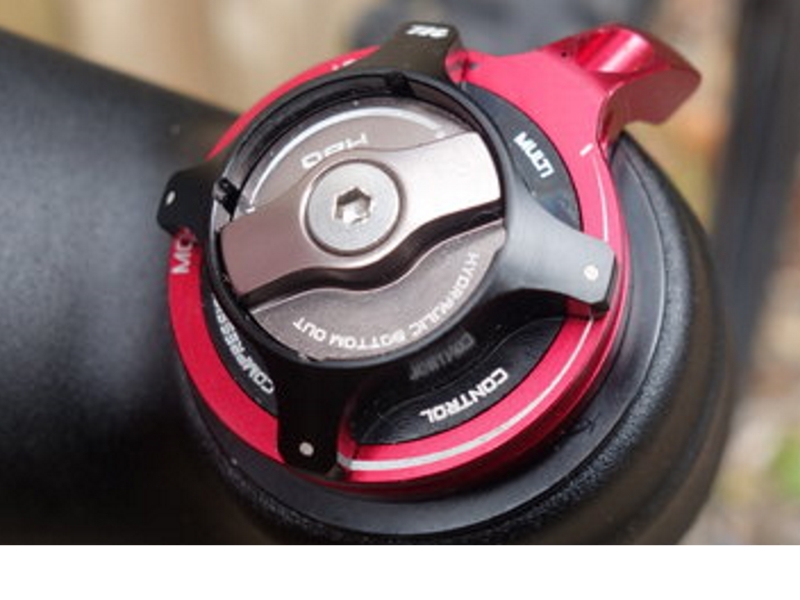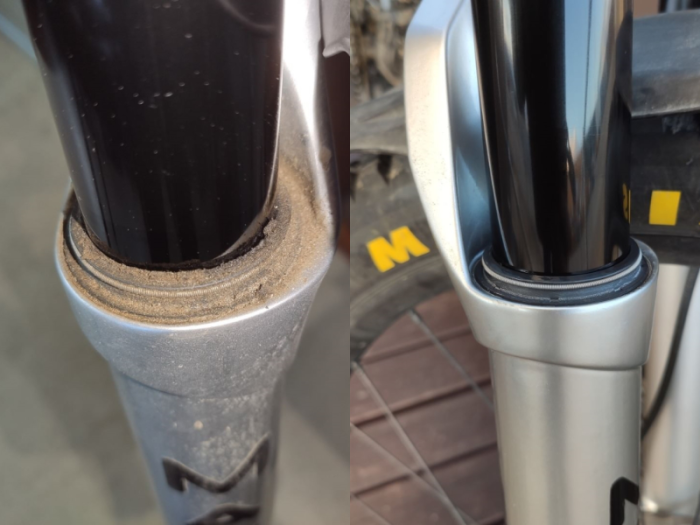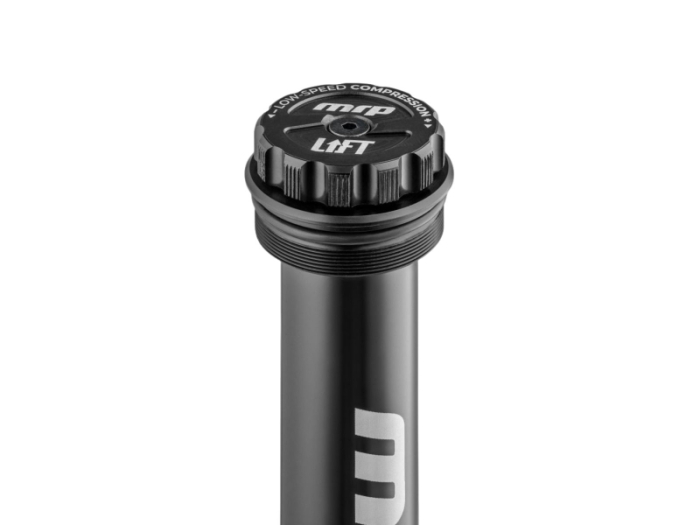Tuning HSC Damping

Low Speed Compression (LSC) is about the oil flow through the, usually adjustable, bypass ports. High Speed Compression (HSC) is when the oil flow gets too much for the LSC ports and needs an additional path to escape, usually through a shimmed piston but sometimes (like in Cane Creek shocks) through spring backed poppet valves.
High and low speed damping is all about the compression speed, what we call shaft speed. It's not directly related to your riding speed and is influenced largely by the size and shape of the bumps you encounter. Square edged rocks and roots produce higher shaft speeds, rounded bumps produce lower.
When your fork (or shock) hits something hard the LSC circuits choke and the pressure builds enough to open the High Speed Compression (HSC) circuits. They are usually steel shims either acting alone or backed with a coil spring. The HSC circuits smoothly open in parallel to allow more oil flow and it should all feel great.
High speed shims, pistons and valves are all there to *reduce* damping at higher shaft speeds. Without them the forces and pressures required to force oil through fixed size holes squares with speed (v^2). Double the compression speed and you get twice as much damping force. Triple the compression speed and you get 9 times the damping force, so much force that the fork or shock can't move fast enough to suck up the bump. Instead it *spikes*, running rough at speed, kicking back on the bars, preventing the suspension from compressing enough and really ruining both traction and the riding experience.
There are still forks and shocks out there which don't have high speed compression ports and valves. These are known as "orifice dampers" or "pumping rod forks". Back in the day the Jr T and Boxxer Race were famous examples of forks that would spike on any sharp bump, because there was no high speed oil path with valving to open and allow the extra oil flow. To compromise they had bigger LSC ports which let the forks wallow and dive. Not ideal.
There are many different configurations for high speed valving and each results in different behaviour. Some are very firm to provide a lockout feel. Some are very soft to provide comfort until overwhelmed. Some start firm and blow open to gain little stiffness at higher speeds (digressive) and others start soft and get firmer with higher speed (progressive), but they all result in a graph of damping force vs shaft speed (see below example). A line up higher means more damping force and a harder ride which can eat more bump energy. A line down lower means a softer ride.
These graphs are from the Manitou ABS+ tuning guide:
If you don't have enough HSC then your suspension will blow through travel too quickly when you need support and will bottom out (run into the end of stroke) too easily and too often.
If you have too much HSC then your suspension will feel harsh, it will kick on square edged impacts and will not use enough travel to suck up each bump.
There are two parts to your HSC valving. The base tune and adjusters.
The base tune sets the minimum HSC damping and adjusters can only increase it. If your fork or shock has adjustable High Speed Compression Damping (like a Manitou Mattoc or Fox RC2) then you can apply extra force to these HSC valves to move the whole damping curve upwards. Adjusters typically work by increasing preload on the valving by compression shims or coil springs. They don't usually alter the shape of the damping curve, they just shift it upwards. This not only gives you more HSC damping across the speed range. It also increases the effectiveness of the LSC circuit and adjusters as they need to build more pressure before HSC can take over, creating a higher force/pressure threshold which makes your LSC adjuster more effective. They piggy back off each other to create total damping feel. At the extreme end of HSC adjustment it becomes an orifice damper relying total on the LSC ports for damping. The low extreme of soft HSC gives you virtually no compression damping regardless of LSC setting.
Some forks and shocks have hidden additional factors that you may not want. In a 2014-17 RCT3 Pike/Lyrik damper you have three choices for HSC. Position 1 leaves the base tune alone. Position 2 brings an additional coil spring in to add stiffness to the shim stack but also closes the LSC ports to provide a soft lockout. Position 3 adds more preload to the coil spring and shim stack to provide a hard lockout effect. Which I guess someone asked for!
So if your suspension has the right air pressure or spring rate, the right ride height, you're running LSC mostly closed and you're still bottoming it out, start increasing HSC and seeing how it feels.
Not enough HSC and you'll blow through the travel too fast on sharp hits.
Too much HSC and your fork will run rough and not use enough travel to absorb each bump. This is called "spiking".
The faster and harder you ride the more HSC you will want to (and need to) run. The more relaxed and floating you ride the less HSC you will want to run. It's also terrain specific. On choppier and rockier trails (i.e. Alexandra) you can't run a lot of HSC without the fork spiking on sharp hits that aren't big enough to threaten full travel but generate high shaft speeds. On smoother and more groomed trails you can run a lot more HSC without spiking. This works great on jump tracks where you need bottom out resistance, especially if you suck at landing like me.
If your suspension has the right air pressure, the right ride height, you're already running LSC wide open, HSC wide open and it's still harsh and kicks then your base tune is too firm. Your fork or shock needs a revalve to provide a softer base tune so it can be tuned correctly.
One of the few user revalveable forks on the market is the Manitou ABS+. Even if you don't currently have a Manitou ABS+ fork it's worth taking a read through the manual here. Manitou ABS+ Tuning kits are available here.
Find Out More
For more information about setting up your suspension check out the following articles:
• Using Natural Frequency to Set Air Pressure & Spring Rate
• Tuning Low Speed Compression (LSC) Damping
You may also be interested in our range of Technical Articles & Resources, written to help with bike maintenance & suspension setup.


